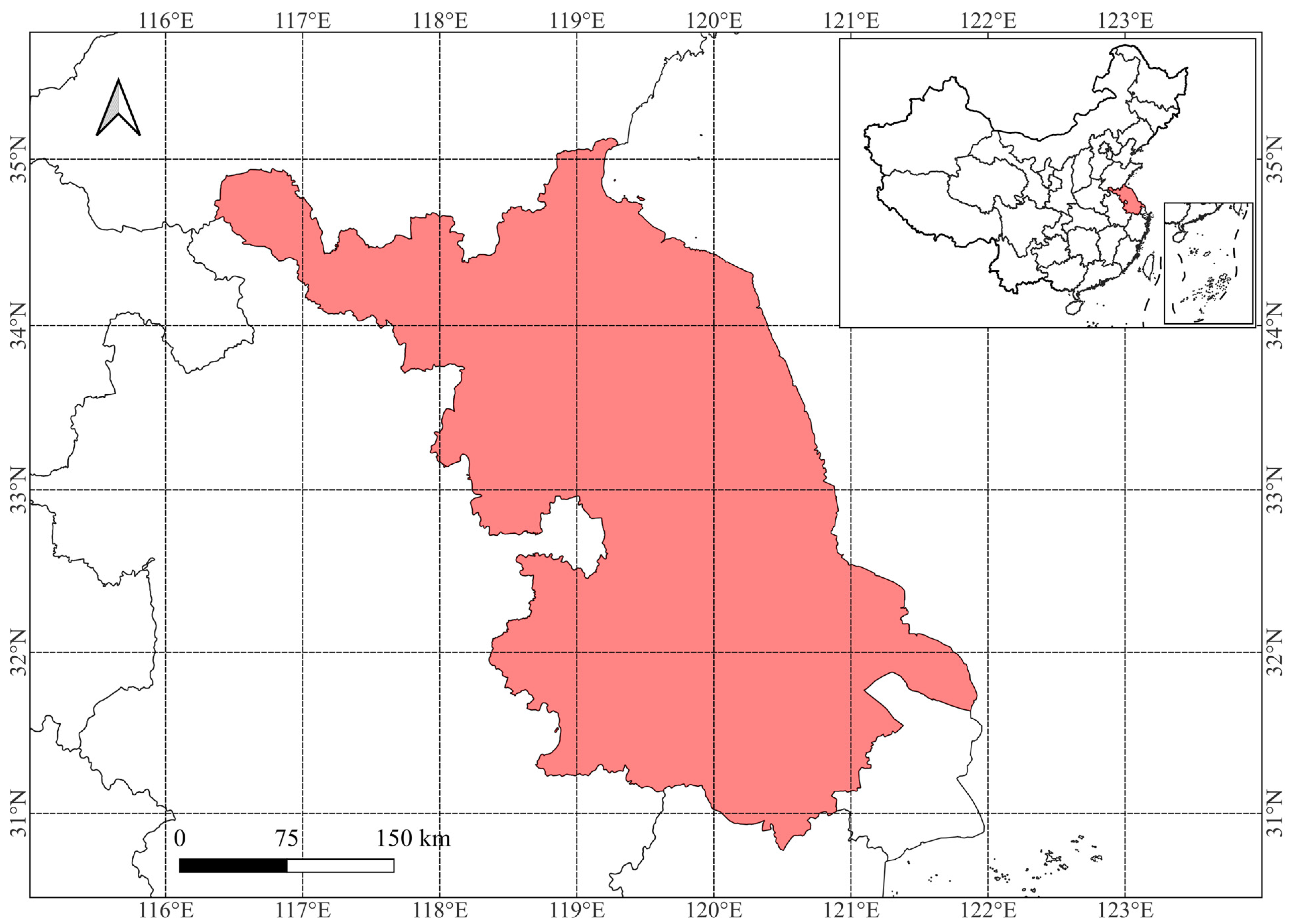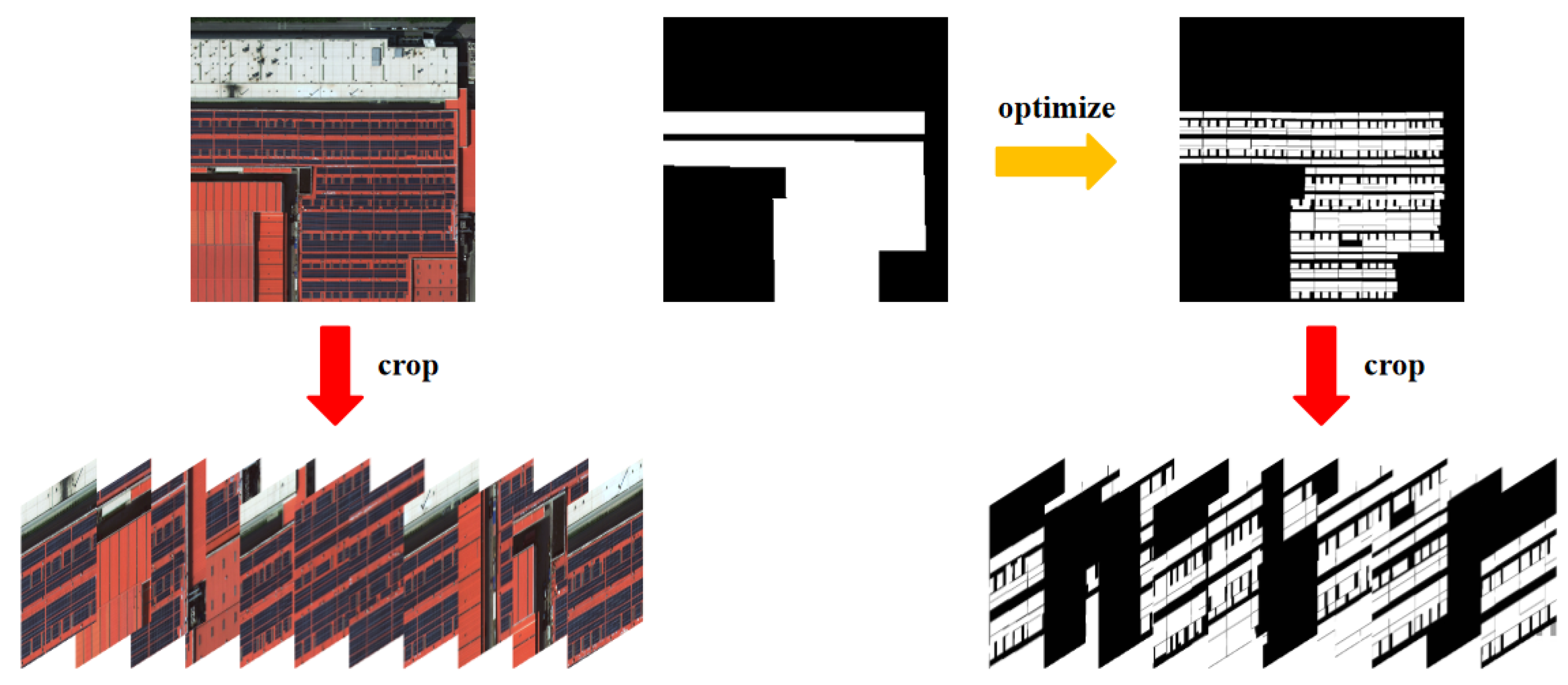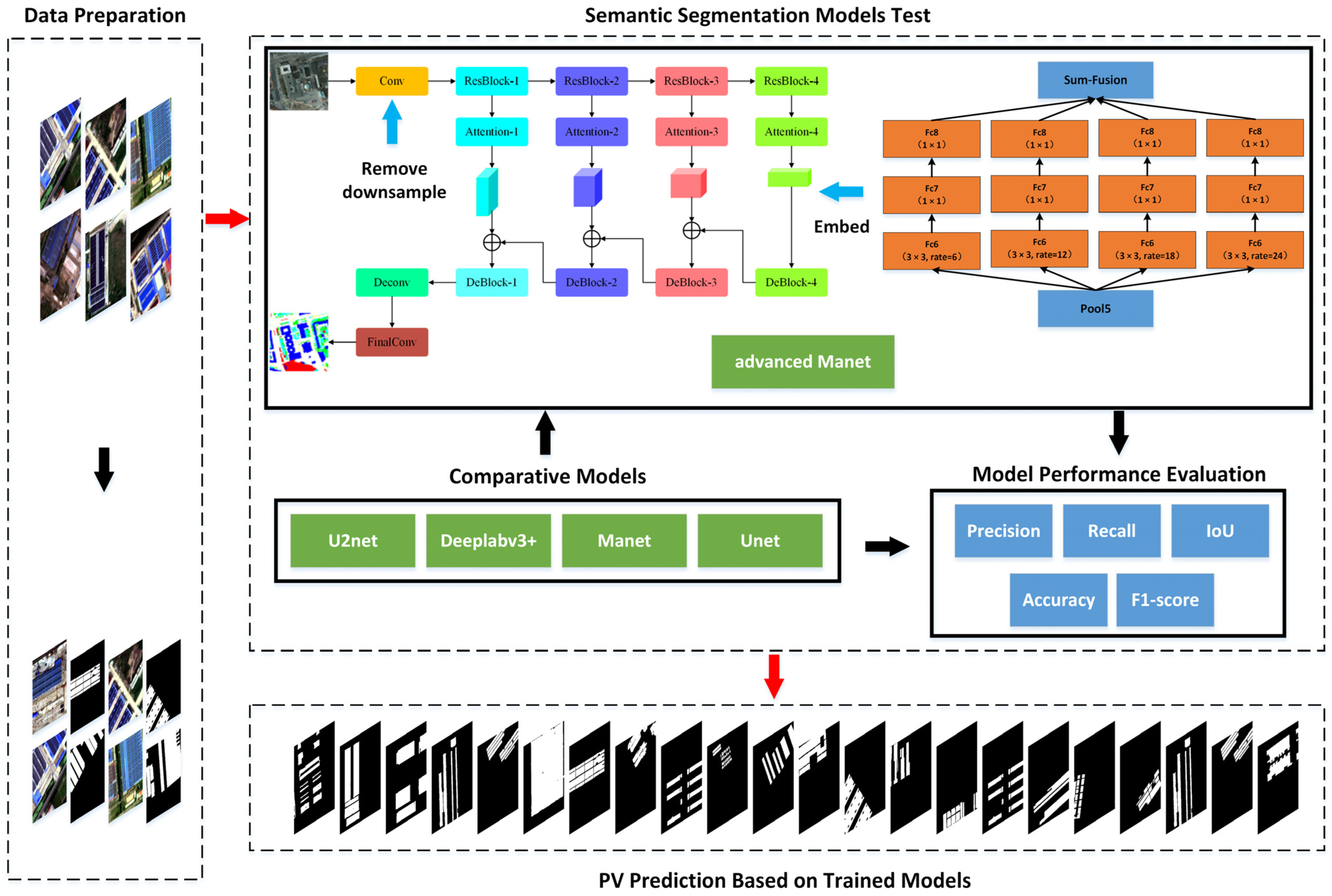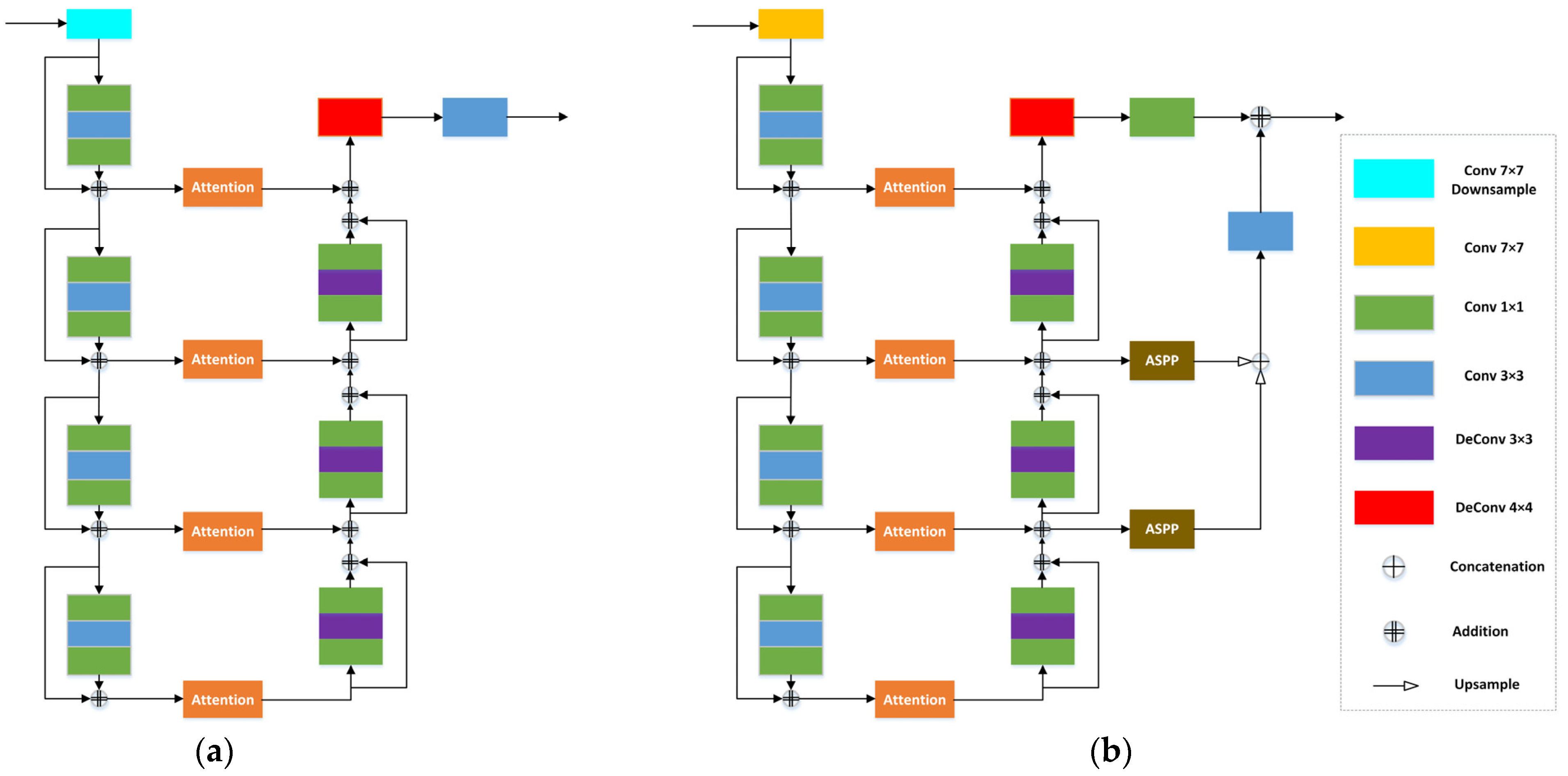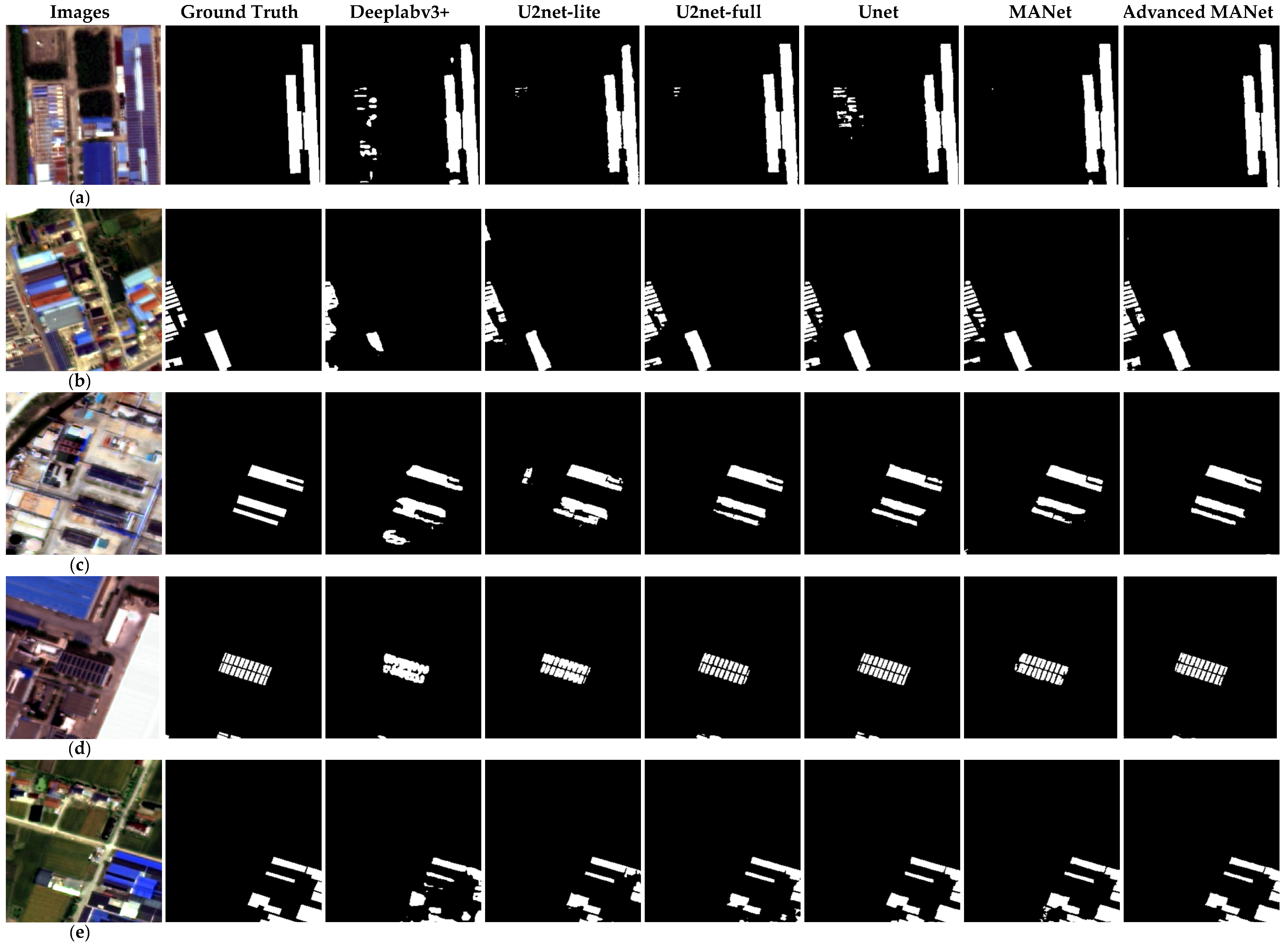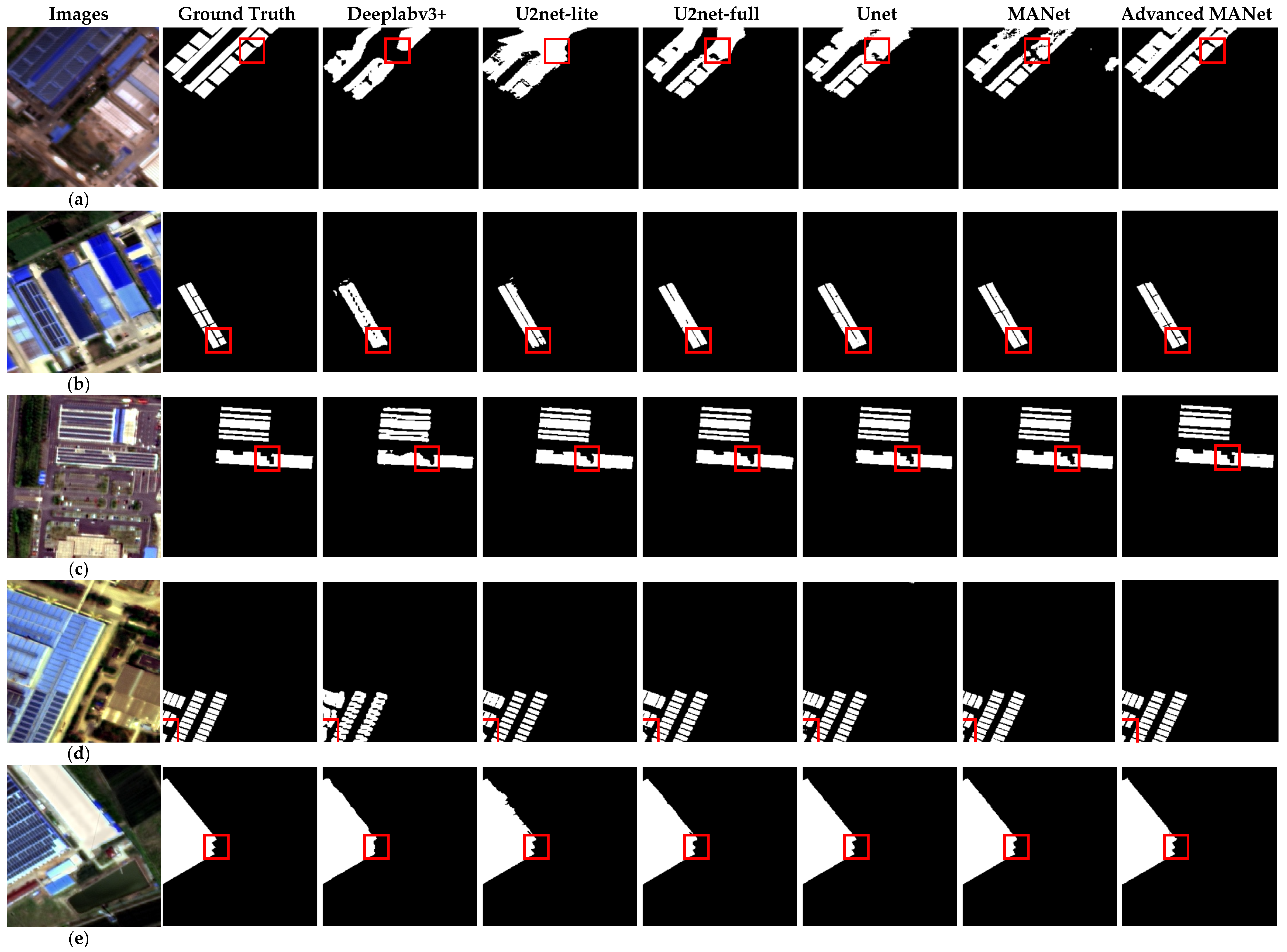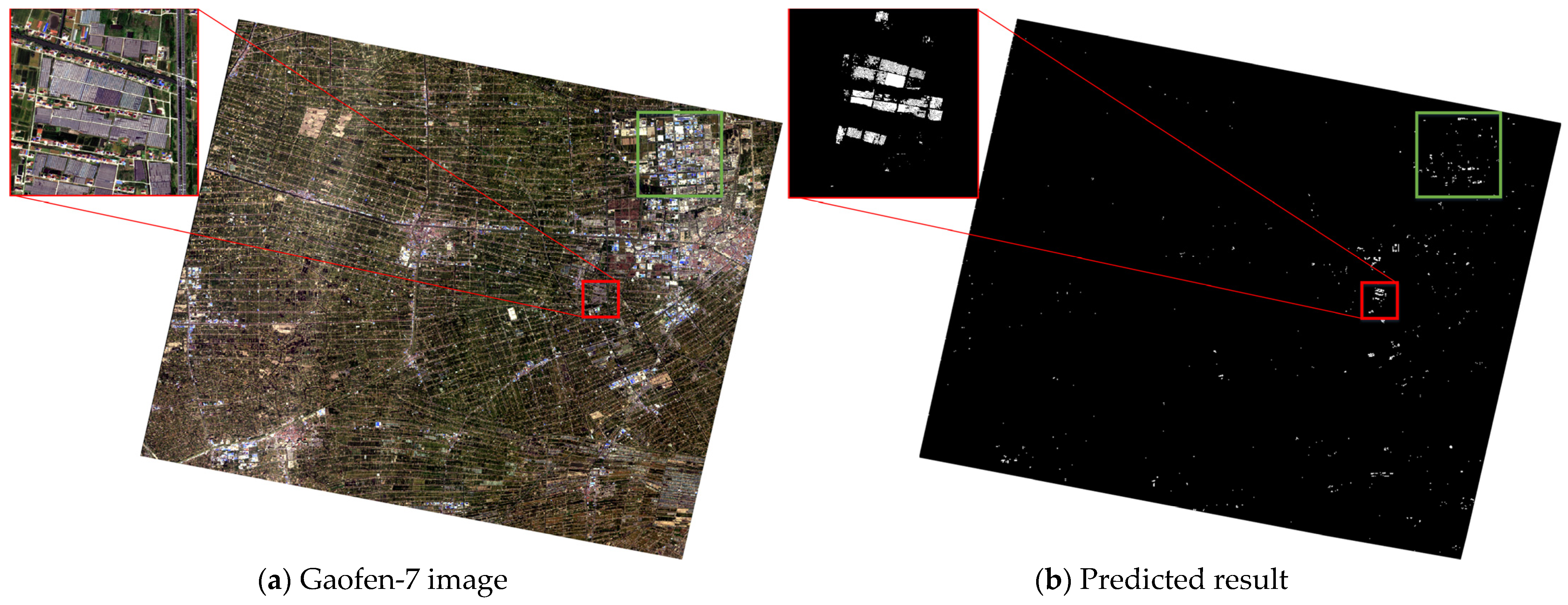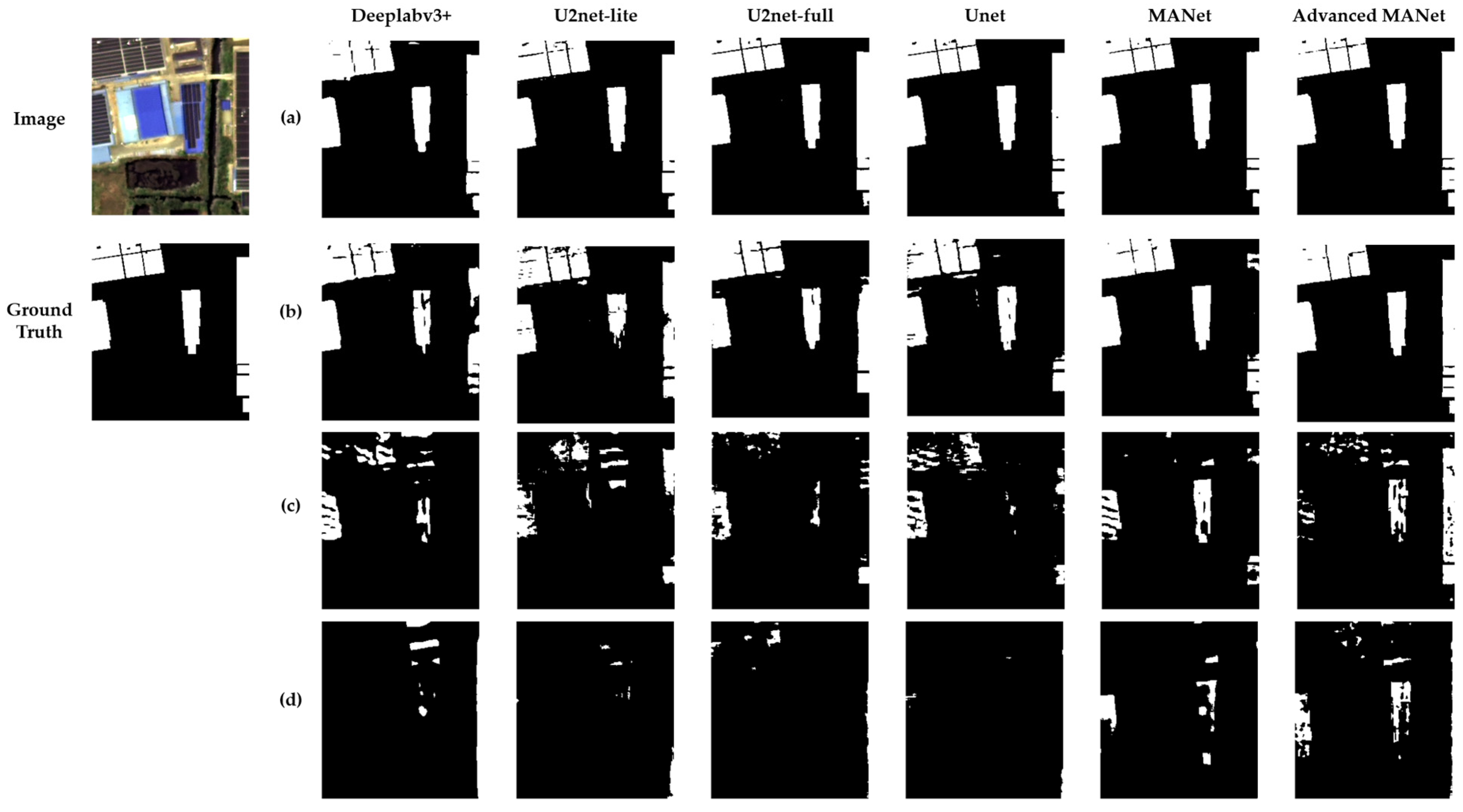1. Introduction
Global problems, such as the greenhouse effect, ecological damage, and climate change, that have been caused by the over-consumption of fossil energy have posed a serious threat to the sustainable development of humankind. In this context, the establishment of a clean, low-carbon energy system has become a global trend. With significant environmental, economic, and social benefits, solar PVs provide a highly promising avenue for sustainable energy conversion [
1,
2,
3].
Centralized PV construction requires a large amount of land resources [
4]. On the one hand, land resources in urban areas are small, making them not suitable for centralized PV installation. On the other hand, urban areas are densely populated and have a high demand for electricity. This results in a mismatch between the construction of centralized PVs and power energy demand [
5]. Compared with centralized PVs, distributed rooftop PVs are generally built on the surface of buildings and can be flexibly installed according to the characteristics of the building, significantly improving land utilization. At the same time, distributed rooftop PVs are located on the user side, and users can generate and consume electricity nearby, which greatly reduces the power loss during the transmission process of the grids. Therefore, distributed rooftop PVs have become the main form of utilizing solar energy in urban areas and have made rapid development in recent years.
The installed capacity and spatial distribution information of PVs are important basis for management departments to formulate regulatory policies, which not only support the dynamic updating of PV construction planning paths, but also provide a working basis for tasks such as power generation assessment. With the increase in distributed rooftop PVs, their spatial distribution is characterized by the scattered layout that includes many PVs. Therefore, traditional approaches to obtain information on installed capacity and spatial distribution of distributed rooftop PVs, like surveys and utility company interconnection files, are both inefficient and costly in terms of time and labor [
6].
Remote sensing, as a means of non-contact measurement, is capable of acquiring a wide range of data in a short period of time. With the development and progress of remote sensing technology, the resolution of satellite is also improving [
7]. Multi-source, high-resolution remote sensing images undoubtedly provide low-cost, high-efficiency data support for the acquisition of PV information. PV information extraction based on remote sensing has become the most widely used monitoring means. Acquiring PV information based on remote sensing visual interpretation can achieve high accuracy, but it also requires high time and labor costs. Therefore, more and more studies have been paying attention to extracting PV information by means of computer vision. Xia et al. used a combination of NDBI index and random forest to extract PV power plants in five provinces of Northwest China [
2]. Chen et al. used a combination of raw spectral features, PV extraction features, terrain features, and classifiers, such as XGBoost, random forest, and support vector machines to extract PV power plants in the Golmud region of China [
8]. Wang et al. proposed a method of extracting PV power plants based on multi-invariant feature combination using Landsat 8 OLI remote sensing images [
9].
The above studies are based on traditional machine learning methods. These methods are usually two-stage, with feature extraction followed by classification [
10]. In this case, the feature extraction stage requires human-designed features [
11], while the classifier also requires human selection and design. Traditional machine learning methods have limited nonlinear mapping capabilities and have good results in dealing with targets with relatively homogeneous backgrounds, such as centralized PVs [
8,
12]. However, when transferred to deal with targets with complex backgrounds, such as distributed rooftop PVs, these methods often fail to achieve better results.
Compared with traditional machine learning methods, deep learning methods integrate feature extraction and classification into one stage [
10]. Meanwhile, deep neural networks have stronger nonlinear mapping ability [
13], which is more suitable for target extraction in complex backgrounds. Due to the wide application of deep learning in the field of natural images, many researchers started to use deep learning methods in the field of remote sensing and made breakthroughs in PV information extraction. In the centralized PV information extraction study, Du et al. used the Deeplabv3+ model with ResNeSt-50 as the backbone to extract centralized PV power stations within China [
14]. Ge et al. combined the EfficientNet-B5 scene classification and U2net semantic segmentation models to extracted centralized PV power stations in Qinghai, Xinjiang, and Gansu provinces [
15]. Wang et al. proposed the PVNet model for the extraction of regularly shaped PV panels in centralized PV systems [
16]. In the distributed rooftop PV information extraction study, Jurakuziev et al. designed a network combining Unet and EfficientNetB7 [
17] for information extraction and power generation capacity estimation of distributed rooftop PVs in Gangnam District, Seoul, South Korea [
6]. Zhu et al. designed a modified Deeplabv3+ model based on the German Heilbronn remote sensing data. Attention and ASPP modules were added on the basis of the Deeplabv3+ model, and the PointRend Network [
18] was integrated to optimize the prediction boundary [
19]. Camilo et al. used SegNet [
20] to extract distributed rooftop PVs based on remote sensing data from Fresno, California, USA [
21]. Wani et al. designed a lightweight distributed PV information extraction model based on Duke California Solar array (DCSA). The model combined the structure of Mobilenet [
22] and Unet, which improved the extraction speed and ensured the accuracy of the extraction [
23]. In addition, since most of the distributed PVs are on the surface of buildings, the study of extracting buildings is also useful for distributed PV extraction. Guo et al. proposed SG-EPUNet to automatically update the existing building databases to their current status with minimal manual intervention. In SG-EPUNet framework, EPUNet was designed to extract building features robustly [
24]. Liu et al. proposed MS-GeoNet for building footprint extraction. The proposed architecture focused on multi-scale nested characteristics and the spatial correlation between buildings and backgrounds, which outperformed the Fully Convolutional DenseNets [
25].
Currently, studies using deep learning to extract distributed rooftop PV information focus on household rooftop PVs. Li et al. conducted experiments on the resolution selection problem of remote sensing images for distributed rooftop PV information extraction [
26]. Experimental results showed that 0.3 m was the threshold resolution for a PV segmentation issue, and 1.2 m was the lowest limitation for PV segmentation. Actually, distributed rooftop PV information can be divided into two categories, i.e., household rooftop PV information and industrial and commercial rooftop PV information.
In recent years, the high demand for energy use and the large total roof areas have made industrial and commercial rooftop PVs an important form for realizing the comprehensive utilization of PVs and accelerating the transformation of green energy development. In contrast to household rooftop PVs, the larger area of industrial and commercial rooftop PVs allows relatively accurate information to be extracted without the use of ultra-high resolution remote sensing images. In addition, the operation mode of industrial and commercial rooftop PVs has great flexibility. Together with the characteristic of large scale, industrial and commercial rooftop PVs can achieve higher economic benefit than household PVs. Therefore, the study of industrial and commercial rooftop PV information extraction methods based on remote sensing images has an important value for application, and it is also realistic in terms of the need to promote green energy strategies. However, current researches on industrial and commercial PVs focus on economic benefit analysis [
27,
28] and power generation prediction [
29], and do not use remote sensing technology. There are no studies on industrial and commercial rooftop PV extraction using remote sensing images with a resolution lower than 0.3 m.
This paper focuses on the distributed industrial and commercial rooftop PV information extraction method based on Gaofen-7 satellite with a resolution of 0.65 m. First, two industrial and commercial rooftop PV datasets were constructed using Gaofen-7 satellite images and the publicly available PV dataset, which provided data input for the training of deep learning models; Second, we optimized the MANet model and proposed an advanced MANet. Compared to MANet, the advanced model removed the downsample operation in the first stage of the encoder, which improved the model’s ability to extract low-level spatial information [
30]. The introduction of the ASPP-based auxiliary branch improved the model’s ability to extract multi-scale information. In addition, the attention mechanism ensured the model’s ability to extract high-level semantic information [
30]. We conducted comparative experiments and the results showed that the advanced MANet model outperformed state-of-the-art models.
4. Conclusions
In the context of the rapid development of distributed PVs, the shortcomings of traditional PV monitoring methods have become increasingly apparent. As a result, there is increased interest in remote-sensing-based means of monitoring PVs. Currently, distributed rooftop PV monitoring methods are based on satellite or aerial images with resolution higher than 0.3 m. As an important part of distributed rooftop PVs, industrial and commercial rooftop PVs have a great potential for development. Therefore, this paper studies the industrial and commercial rooftop PV information extraction method based on 0.65 m Gaofen-7 satellite images. This study constructed two distributed industrial and commercial rooftop PV datasets based on Gaofen-7 images and the publicly available PV dataset. The advanced MANet model was proposed by removing the downsample operation in the first stage of the encoder and adding an auxiliary branch containing the ASPP module in the decoder. Based on the constructed datasets, comparative experiments were conducted between the advanced MANet model and state-of-the-art semantic segmentation models, such as Unet, Deeplabv3+, U2net, and MANet. The experimental results show that the advanced MANet model has better performance for industrial and commercial rooftop PV information extraction. The following aspects of the study need to be improved. First, the dataset based on the Gaofen-7 satellite uses only the RGB three-band, which does not fully utilize the data from the Gaofen-7 RGB and near-infrared four-band. In the future, four-band data will be introduced for experiments. Second, due to the similarity of the spectral characteristics of industrial and commercial rooftop PVs and agricultural greenhouses, the model can easily misidentify agricultural greenhouses as industrial and commercial rooftop PVs. This may be caused by the small size of the training dataset. In the future, the commercial and industrial rooftop PV dataset can be expanded to enhance the model’s ability to extract PV features. Third, the use of the advanced MANet has only been studied in some areas of Jiangsu Province to date. In the future, the examination can be extended to the whole province.
